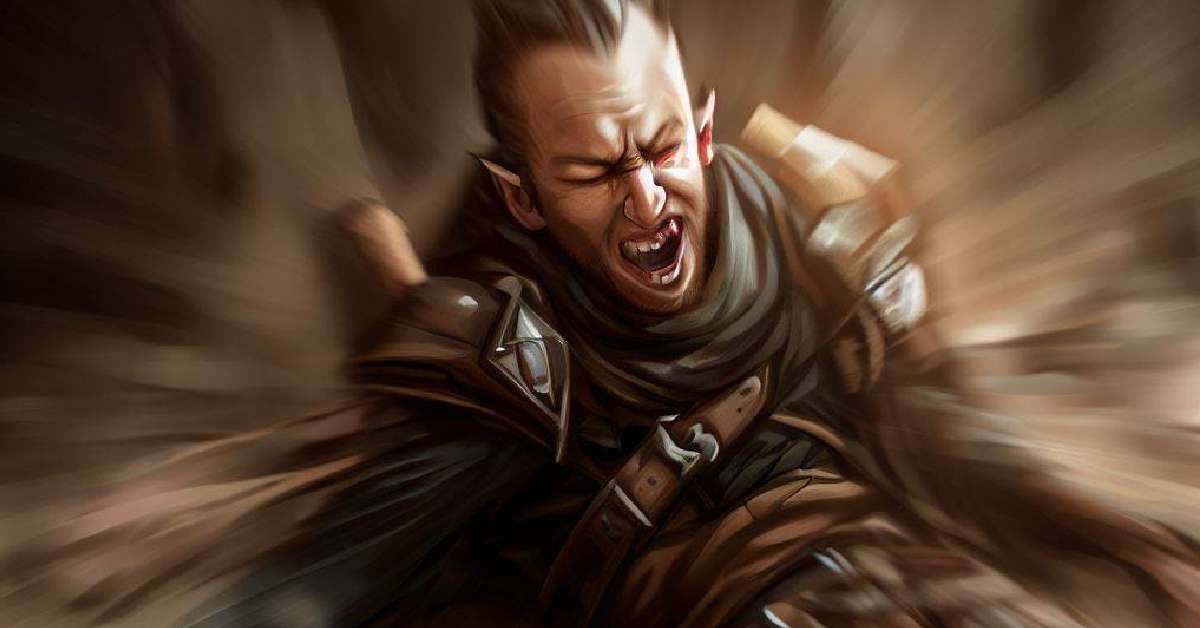
Ever wondered how to dodge a dragon’s fiery breath or resist a cunning wizard’s charm? Well, you’re not alone. Saving throws are one of those game mechanics in Dungeons & Dragons that can seem confusing but are crucial for your character’s survival. Welcome to the ultimate guide that will make you a master of the roll!
In this guide, we’re diving deep into the nitty-gritty of saving throws in DnD 5E. Whether you’re a newbie still learning the ropes or a seasoned Dungeon Master, this article is your one-stop-shop for everything you need to know.
What’s Inside?
- Core Formula Breakdown: The ABCs of calculating those crucial rolls.
- Step-by-Step Examples: Real-world scenarios to help you get the hang of it.
- Advanced Strategies: Pro tips to maximize your saving throw potential.
- DM’s Corner: How to make saving throws more engaging and fair in your adventures.
So, grab your d20, put on your wizard hat or shield, and let’s get rolling!
What Are Saving Throws?
Saving throws are a cornerstone of Dungeons & Dragons gameplay, but what exactly are they? Simply put, a saving throw is a roll you make to avoid or lessen certain effects, like spells, traps, or environmental hazards. In this section, we’re lifting the fog of war that often surrounds this game mechanic.
Key Situations for Saving Throws
Table: Common Scenarios Requiring Saving Throws
| Scenario | Saving Throw Type | Example |
|---|---|---|
| Spells | Various | Fireball, Charm |
| Traps | Dexterity | Pitfall, Arrows |
| Poisons | Constitution | Snakebite |
| Mental Attacks | Wisdom | Mind Control |
| Physical Force | Strength | Being Grappled |
Whether you’re dodging a trap or resisting a spell, saving throws come into play in a variety of situations. Knowing when to expect them is half the battle.
Types of Saving Throws
Let’s talk flavors. There are six main types of saving throws, each corresponding to one of your character’s six ability scores: Strength, Dexterity, Constitution, Intelligence, Wisdom, and Charisma.
List: Types of Saving Throws
- Strength: Resisting force or physical power.
- Dexterity: Dodging out of harm’s way.
- Constitution: Enduring poisons, diseases, or other internal threats.
- Intelligence: Thwarting illusions or other mind-bending spells.
- Wisdom: Defending against mental attacks and manipulation.
- Charisma: Maintaining self-control when your will is challenged.
Knowing the type of saving throw you’re up against is crucial for understanding how to calculate it and, more importantly, how to maximize your chances of success.
The Core Formula
If saving throws are the bread and butter of DnD, then the core formula is the recipe. Here’s where we get down to the nuts and bolts of calculating a saving throw. Don’t worry; it’s easier than defeating a goblin—most of the time, at least.
Components
The basic formula for a saving throw is like a puzzle, and each piece is vital.
Saving Throw=Ability Modifier+Proficiency Bonus+d20 Roll+Other ModifiersSaving Throw=Ability Modifier+Proficiency Bonus+d20 Roll+Other Modifiers
- Ability Modifier: Based on the ability score relevant to the type of saving throw.
- Proficiency Bonus: Added if you’re proficient in the type of saving throw.
- d20 Roll: The all-important roll of a 20-sided dice.
- Other Modifiers: Includes spells, items, and situational bonuses.
Decoding the Formula
Table: Breakdown of Formula Components
| Component | Description | Example |
|---|---|---|
| Ability Modifier | Derived from ability score relevant to saving throw type. | Strength modifier |
| Proficiency Bonus | Added if you are proficient; scales with level. | +2 at Level 1 |
| d20 Roll | A roll of a 20-sided dice; the luck factor. | Rolling a 15 |
| Other Modifiers | Special bonuses from spells, items, or situational factors. | Bless spell |
Each part of the formula has its own quirks and nuances, which we’ll dive into in the coming sections. Whether it’s understanding how your proficiency bonus scales as you level up or figuring out what spells can give you that extra edge, we’ve got you covered.
Step-By-Step Calculation
Time for some action! Let’s walk through a sample saving throw calculation from start to finish. This hands-on approach will solidify your understanding and make you a pro in no time.
Example Scenarios
List: Sample Saving Throw Scenarios
- Fleeing a Trap: A Dexterity saving throw to avoid falling into a pit.
- Resisting a Spell: A Wisdom saving throw against a Charm Person spell.
- Surviving Poison: A Constitution saving throw after a snakebite.
We’ll pick one of these scenarios and break down the calculation step-by-step, adding in each component of the core formula to see how it all comes together.
Step-By-Step Calculation
Ready to see theory turn into action? Let’s go through a step-by-step example to demystify the process of calculating a saving throw. We’ll use a classic scenario: dodging a fireball spell. Your Dexterity will be put to the test!
Example Scenario: Dodging a Fireball
You’re adventuring through a dark dungeon when suddenly, a fireball comes hurling towards you. Time to make a Dexterity saving throw!
Table: Example Stats for Step-by-Step Calculation
| Character Level | Dexterity Modifier | Proficiency Bonus | d20 Roll | Bless Spell (if any) |
|---|---|---|---|---|
| 5 | +3 | +3 | 15 | +1 |
Step 1: Determine Ability Modifier
First up, check your Dexterity modifier. For this example, it’s +3.
Step 2: Add Proficiency Bonus
You’re proficient in Dexterity saving throws, so you add your proficiency bonus of +3.
Step 3: The d20 Roll
You roll a 15 on your d20. Good roll, but let’s see if it’s enough.
Step 4: Include Other Modifiers
A friendly cleric cast ‘Bless’ on you earlier, so you get an additional +1.
Step 5: The Final Calculation
Time to add it all up!
Saving Throw=Dexterity Modifier (+3)+Proficiency Bonus (+3)+d20 Roll (15)+Other Modifiers (+1)Saving Throw=Dexterity Modifier (+3)+Proficiency Bonus (+3)+d20 Roll (15)+Other Modifiers (+1)
Your final Dexterity saving throw is 3+3+15+1=223+3+15+1=22.
Congratulations, you successfully dodge the fireball!
Proficiency Bonus
The proficiency bonus is like the seasoning in a well-cooked meal—it can make a good roll great. In this section, we’ll explore how this bonus affects your saving throws and how it scales as you level up.
Proficiency Progression
Your proficiency bonus isn’t static; it grows as you gain levels, making you increasingly adept at saving throws you’re proficient in.
Table: Proficiency Bonus by Level
| Level Range | Proficiency Bonus |
|---|---|
| 1-4 | +2 |
| 5-8 | +3 |
| 9-12 | +4 |
| 13-16 | +5 |
| 17-20 | +6 |
Understanding your proficiency bonus and how it evolves is key to maximizing your saving throw capabilities. So, the next time you level up, don’t forget to adjust your calculations!
Ability Modifiers
Ability modifiers are the unsung heroes of the saving throw equation. They’re based on your ability scores and play a pivotal role in how effective your saving throws are. Let’s delve into how each ability score impacts its corresponding saving throw.
Strength Saving Throws
When it comes to resisting physical force, like being shoved or grappled, Strength saving throws come into play.
Scenario: Resisting a Grapple
Imagine a burly orc tries to grapple your character. Your Strength modifier would be your best friend here.
Quick Tip: Fighters and Barbarians typically excel in Strength saving throws due to their high Strength scores.
Dexterity Saving Throws
Dodging arrows or avoiding traps? That’s where Dexterity saving throws shine.
Scenario: Avoiding a Dart Trap
You’re navigating a corridor filled with ominous holes in the walls. Suddenly, darts shoot out! A high Dexterity modifier could be your saving grace.
Quick Tip: Rogues and Monks usually have high Dexterity, making them naturals at dodging hazards.
Constitution Saving Throws
Constitution saving throws test your character’s physical resilience—useful for resisting poisons or stabilizing when at zero hit points.
Scenario: Surviving Poison
Bit by a venomous spider? A Constitution saving throw will determine how badly the poison affects you.
Quick Tip: Classes like Paladins and Fighters often have solid Constitution modifiers, helping them endure such threats.
Other Modifiers
We’ve covered the basic ingredients, but what about the special sauce? Other modifiers like spells, magical items, and situational bonuses can be the cherry on top of your saving throw sundae.
Magical Modifiers
Spells can significantly tip the scales in your favor. From ‘Bless’ to ‘Guidance,’ these magical boosts can be game-changers.
List: Popular Spells for Boosting Saving Throws
- Bless: Adds a d4 to your saving throw.
- Guidance: Another d4, but for ability checks.
- Resistance: Grants a d4 for saving throws against spells.
Item-Based Modifiers
Ever heard of a Cloak of Protection? Magical items like these can add bonuses to your saving throws.
Table: Magical Items That Affect Saving Throws
| Item | Bonus | Description |
|---|---|---|
| Cloak of Protection | +1 | Adds to AC and all saving throws. |
| Ring of Evasion | Special | Succeed on a failed Dexterity saving throw. |
| Stone of Good Luck | +1 | Adds to ability checks and saving throws. |
These modifiers can add that extra oomph to your saving throws, turning near-misses into epic successes.
Advanced Strategies
You’ve got the basics down; now let’s level up your game. Advanced strategies can give you an edge, making your saving throws more effective and helping you out in tricky situations.
8.1 Decision Making
When should you risk it and when should you play it safe? Advanced gameplay often involves making these crucial choices.
Scenario: Using Indomitable
Imagine you’re a Fighter with the Indomitable feature, which allows you to reroll a failed saving throw. Do you use it now or save it for a potentially worse situation?
Quick Tip: Evaluate the stakes. If failure means a severe consequence, it might be worth using your special abilities.
8.2 Meta-Game Awareness
Knowing the Dungeon Master’s tendencies can be as valuable as any stat or item.
Scenario: Anticipating the DM
If your DM frequently employs mind-controlling spells, investing in Wisdom-saving throw boosts could give you a significant advantage.
Quick Tip: Pay attention to recurring themes or challenges in your campaign to anticipate what saving throws might come in handy.
Dungeon Master Tips
Hey Dungeon Masters, this one’s for you! Managing saving throws is a two-way street. Here’s how to keep the game balanced while adding a sprinkle of drama.
Pacing and Drama
Saving throws can be an excellent tool for pacing and introducing suspense into your story.
Scenario: The Ticking Bomb
A ticking bomb needs to be defused. Each failed Dexterity saving throw speeds up the timer. The tension is real!
Quick Tip: Use saving throws to elevate critical moments, making them more memorable.
Custom Scenarios
Feel like going off the beaten path? Custom saving throw scenarios can add unique flavor to your campaign.
Scenario: The Psychic Maze
Players navigate a psychic maze requiring Intelligence saving throws to avoid getting lost in their own thoughts.
Quick Tip: Custom scenarios allow for more storytelling freedom and can challenge players in new and exciting ways.
FAQs
As you dive deeper into the world of saving throws, you’re bound to have questions. Let’s tackle some of the most frequently asked queries that both new and veteran players often ponder.
Can You Crit on a Saving Throw?
One of the most debated questions: Can you score a critical success or failure on a saving throw?
The Answer: No, critical rolls don’t apply to saving throws in DnD 5E. Rolling a natural 20 doesn’t guarantee success, nor does a natural 1 ensure failure, unless house rules say otherwise.
What Happens on a Tie?
So you’ve rolled, and your total matches the Difficulty Class (DC). Who wins?
The Answer: In the case of a tie, the roller wins. So if your saving throw equals the spell’s DC, you succeed!
Can Saving Throws Be Negative?
What if your modifiers are so low that your saving throw could potentially be negative?
The Answer: Yes, technically, a saving throw can be negative, although this is rare and usually means you’re in a dire situation.
Are Saving Throws Ability Checks?
It’s easy to confuse saving throws with ability checks, but they serve different purposes.
The Answer: No, saving throws aren’t ability checks. They are their own category and are influenced by different rules and modifiers.
Community Tips
Sometimes, the best wisdom comes from those who have rolled countless saving throws before you. Here’s some advice straight from the DnD community.
Player Testimonials
List: Words of Wisdom from Veteran Players
- Balance Over Specialization: “Don’t dump all your resources into boosting just one type of saving throw. Diversify!” – Sarah, a Level 10 Rogue
- Know Your Weaknesses: “If you’re bad at Wisdom saving throws, maybe don’t charge at the mind-flayer!” – Mike, Dungeon Master for 5 years
- Team Synergy: “Always have someone in the party who can cast ‘Bless’ or ‘Guidance.’ It’s a game-changer for tough saving throws.” – Emily, a Level 8 Cleric
Community Poll: Most Dreaded Saving Throw
Table: Which Saving Throw Do Players Fear the Most?
| Saving Throw Type | Percentage of Players |
|---|---|
| Wisdom | 40% |
| Constitution | 25% |
| Dexterity | 20% |
| Strength | 10% |
| Intelligence | 5% |
Wisdom saving throws top the chart, likely due to their role in mind control and other debilitating effects.
Beyond 5E
You’ve mastered saving throws in 5th Edition, but what about other versions of DnD? Let’s take a quick detour to see how saving throws have evolved over time and what makes them unique in different editions.
Historical Perspective
Saving throws have seen numerous iterations since the early days of Dungeons & Dragons.
List: Evolution of Saving Throws Across Editions
- 1st & 2nd Edition: Highly specific categories like “Save vs. Petrification” or “Save vs. Spell.”
- 3rd & 3.5 Edition: Introduced the Fortitude, Reflex, and Will categories, simplifying the system.
- 4th Edition: Continued with the Fortitude, Reflex, and Will model but added more complexity.
- 5th Edition: Back to basics, aligning saving throws with the six ability scores for simplicity and elegance.
Comparing Mechanics
While the core idea remains the same, the mechanics can differ significantly between editions.
Table: Saving Throw Mechanics by Edition
| Edition | Saving Throw Mechanism | Complexity Level |
|---|---|---|
| 1st & 2nd | Highly specific categories | High |
| 3rd & 3.5 | Fortitude, Reflex, Will | Medium |
| 4th | Fortitude, Reflex, Will + added features | High |
| 5th | Tied to the six ability scores | Low |
Understanding how saving throws work in various editions can deepen your appreciation for the game and make you more adaptable if you ever decide to explore beyond 5E.
Glossary
Let’s wrap things up with a glossary. If you’ve been tripped up by DnD jargon, this section will clarify those terms.
Lingo Breakdown
List: Common Terms Related to Saving Throws
- Ability Score: One of the six basic attributes of a character (Strength, Dexterity, Constitution, Intelligence, Wisdom, Charisma).
- Proficiency Bonus: A bonus added to rolls in which a character is proficient, including some saving throws.
- DC (Difficulty Class): The target number you must meet or exceed to succeed on a saving throw.
- Modifier: A number derived from an ability score, used to alter die rolls.
- Natural Roll: The number rolled on the die, before any modifiers are applied.
By now, you should be fluent in the language of saving throws, ready to understand and participate in even the most complex discussions and scenarios.




